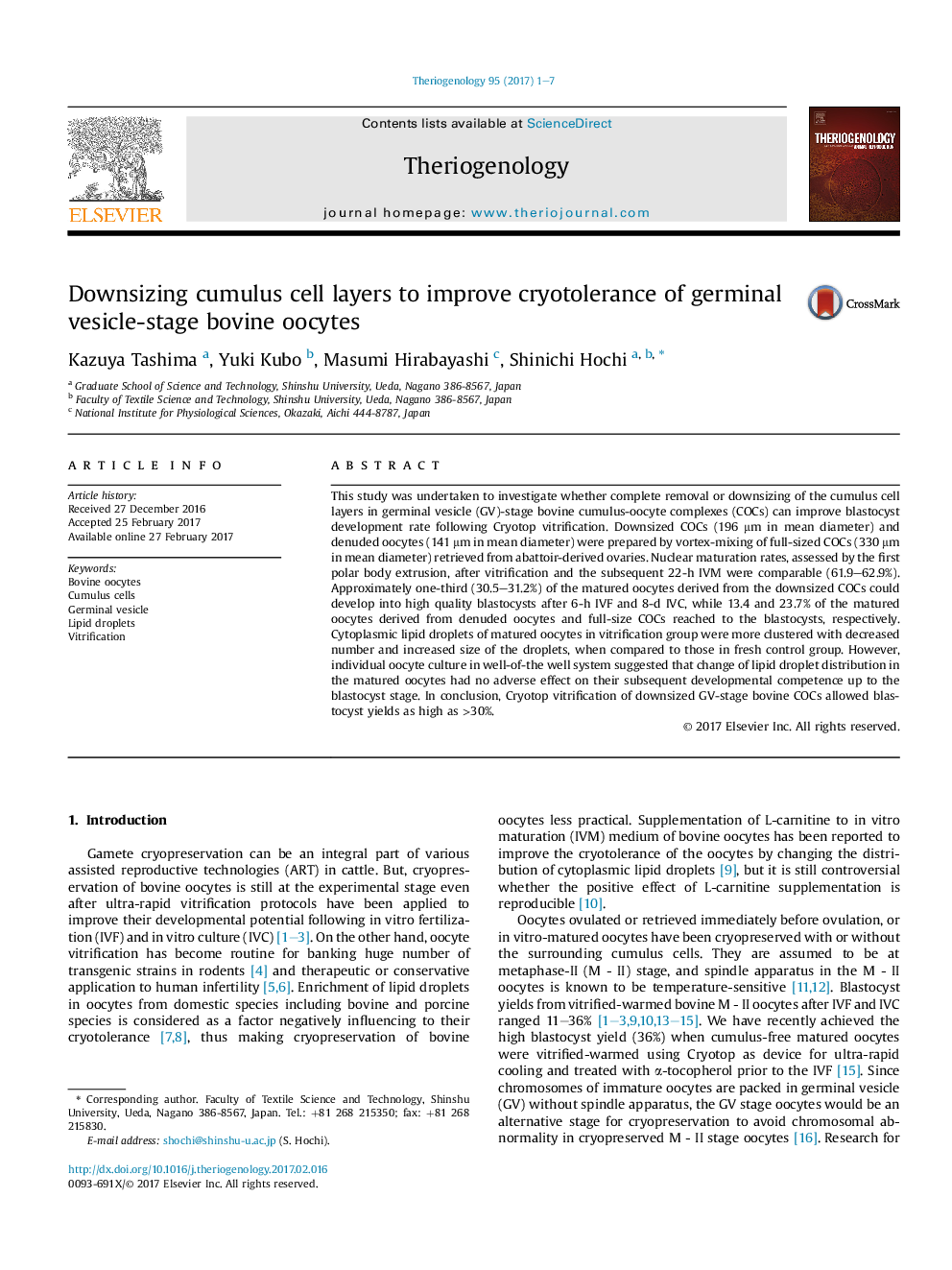| Article ID | Journal | Published Year | Pages | File Type |
|---|---|---|---|---|
| 5523365 | Theriogenology | 2017 | 7 Pages |
â¢More than 30% of matured bovine oocytes could develop into blastocysts when COCs were downsized prior to vitrification.â¢Survival and nuclear maturation rates of the vitrified-warmed DS-COCs were comparable with those of fresh control oocytes.â¢Change of lipid droplet distribution in the matured oocytes had no adverse effect on their developmental competence.
This study was undertaken to investigate whether complete removal or downsizing of the cumulus cell layers in germinal vesicle (GV)-stage bovine cumulus-oocyte complexes (COCs) can improve blastocyst development rate following Cryotop vitrification. Downsized COCs (196 μm in mean diameter) and denuded oocytes (141 μm in mean diameter) were prepared by vortex-mixing of full-sized COCs (330 μm in mean diameter) retrieved from abattoir-derived ovaries. Nuclear maturation rates, assessed by the first polar body extrusion, after vitrification and the subsequent 22-h IVM were comparable (61.9-62.9%). Approximately one-third (30.5-31.2%) of the matured oocytes derived from the downsized COCs could develop into high quality blastocysts after 6-h IVF and 8-d IVC, while 13.4 and 23.7% of the matured oocytes derived from denuded oocytes and full-size COCs reached to the blastocysts, respectively. Cytoplasmic lipid droplets of matured oocytes in vitrification group were more clustered with decreased number and increased size of the droplets, when compared to those in fresh control group. However, individual oocyte culture in well-of-the well system suggested that change of lipid droplet distribution in the matured oocytes had no adverse effect on their subsequent developmental competence up to the blastocyst stage. In conclusion, Cryotop vitrification of downsized GV-stage bovine COCs allowed blastocyst yields as high as >30%.
